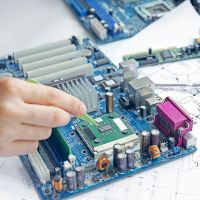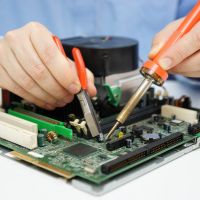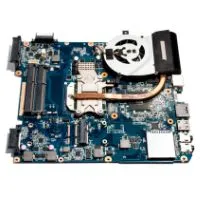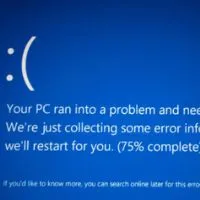Dead motherboard symptoms. The motherboard is the central part of the mobile or computer because if it becomes faulty, it means your system is dead.
Usually, when you turn on the computer, it shows lights, beeps, and a fan turns on, but if none of these shows any signs, it means the motherboard is dead.
The computer’s motherboard is the central part of the system because it connects all the computer parts with each other. If it becomes faulty due damaged breaker, blown fuse, or any other reason, you can not operate the computer.
A few days ago, when I turned on my computer to write the assignment, there was no beep or light on pressing the power button.
I checked with my hardware expert friend, and after inspecting the system thoroughly, he told me that the motherboard had a hardware issue.
Therefore, I am writing this article to describe various symptoms of a dead computer motherboard. So, if you find any of these symptoms with your system, you need to take the services of a computer hardware expert.
Dead motherboard symptoms

The motherboard is like a computer; if it becomes faulty, there will be no sign of turning on the computer as it manages all the parts like the CPU, monitor, and other parts.
When you press the power button and the system does not turn on, check all the power cords because sometimes you do not fit them tightly in their ports; if all the cables are perfectly attached to each other, check these points to confirm the dead motherboard.
No light on
When your computer is in the ideal condition, you press the power button; then lights turn on in the CPU to inform you that system is running well and preparing to start.
But, if no lights turn on, it means there is an issue with the computer’s motherboard as it manages and controls all the parts; if there is an issue with the motherboard, the computer will not turn on, and you need to check it to expert.
No speaker beep
It is the same as the above step when you push the power button; the motherboard speaker also beeps with the lights. It starts to beep frequently, a sign of a problem with the motherboard.
Computer restarts automatically
Suppose you are operating on the computer, and it begins to restart automatically frequently.
In that case, it is a symptom of a faulty motherboard and is about to die, so if it happens with your system, switch off the unit and check it with an expert.
Failed to boot
If you push the system’s power switch to turn on and it does not start to boot or show anything at all, this is a symptom of a dead motherboard.
High temperature
High temperature is a prominent symptom of a faulty motherboard.
If your system is heating up even when there is an average temperature outside, it is on the verge of being dead so stop operating the system for one hour to let it cool. If it heats up again, then there the motherboard is faulty.
Physical damage

The last thing to check for dead motherboard symptoms is physical damage to the motherboard.
Pull out the power cord of the CPU from the outlet and place it on a smooth surface because if you place it on a rough surface, it may fall from there.
Open the CPU cover and check the motherboard to see if there is any sign of physical damage to the motherboard.
Check the CPU sockets, slots, and header. If these parts are damaged, you can repair the motherboard from the local repair expert.
But if you see large cracks on the motherboard and visible damage, I am sorry to say you can not repair or fix it because there is no way to repair the cracked computer motherboard.
You will have to replace the dead motherboard with a new motherboard for the computer to turn the system.
Conclusion
The final words in this article are motherboard is the main component of the CPU; if it becomes dead, you can not run the computer at all because it does not even start when there is a faulty motherboard.
The most common symptoms of a dead motherboard are these.
- No light on
- No speaker beep
- Computer restarts automatically
- Failed to boot
- High temperature
- Physical damage
You can not repair a faulty motherboard so take the services of a computer hardware expert.
Related Guides

